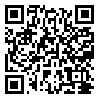Volume 27 -
RJMS 2020, 27 - : 58-67 |
Back to browse issues page
Research code: IR.SSRI.REC.1398.621
Ethics code: IR.SSRI.REC.1398.621
Download citation:
BibTeX | RIS | EndNote | Medlars | ProCite | Reference Manager | RefWorks
Send citation to:



BibTeX | RIS | EndNote | Medlars | ProCite | Reference Manager | RefWorks
Send citation to:
Hosseynzade nazloo E, Peeri M, Delfan M. Effect of 10 weeks of high intencity interval training on tumor volume ratio, responses to IGF-1 protein , gene expression of AKT and mTORC1 in rat’s myocardium with breast cancer. RJMS 2020; 27 :58-67
URL: http://rjms.iums.ac.ir/article-1-6143-en.html
URL: http://rjms.iums.ac.ir/article-1-6143-en.html
Islamic Azad University, Central Tehran Branch, Tehran, Iran , m.peeri@iautcb.ac.ir
Abstract: (2464 Views)
Background & Aims: Nowadays, breast cancer is the most common type of cancer among women in the world. In this disease, increased oxidative stress and causes the tumor cell to proliferate. Because decreased the function of estrogen receptors inhibits the synthesis and function of insulin growth factor 1 and inhibits signaling of the protein tyrosine kinase with the inhibition of mechanistic target of rapamycin complex 1, After that, weakens the aerobic capacity and occurs heart disorder. However Regular exercise training it diferense volume Prevents an increase in tumor volume. By setting up signal paths In gene expression Cardiomyopathy Reduces it in people with breast cancer. The purpose of the present study Effect of 10 weeks of High intensity interval training on tumor volume, Response IGF-1, Genes AKT,m TORC-1 Myocardium was in mice with breast cancer.
Methods: This is an experimental study. For this purpose 12 Balbesian female mice were divided into 2 groups of 6; High intensity interval training (H) and Control (C) Tumor induction By injection MC4-L2Done. The exercise protocol was performed for 10 weeks of the high intensity interval training group was as follows 35 minutes: After 5 minutes of warm-up program with 30 to 40% VO2max intensity, High intensity interval training in 6 cycles between 85 to 90% VO2max in 3 minutes and 20 seconds, with 90 seconds of active rest between each cycle of 30 to 35% VO2max and 5 minutes of cold Was performed with an intensity of 30 to 40% VO2max. Tumor volume weekly It was measured and recorded by a caliper. 24 hours after the last training session The mice were sacrificed and their left ventricle ejected. SDS-PAGE and primary and secondary antibodies were used to measure IGF-1 protein synthesis levels, and Realtime-PCR and GAPDH control genes with forward and reverse primers were used to measure gene expression.
Results: The results showed that IGF-1 protein in HIIT group increased show any significant changes compared to the control group (p=0.005). gene expression of AKT in HIIT group (p=0.01) Increase compared to the control group. The m TORC-1 gene expression in H group (p=0.01) was significantly higher than the control group. tumor volume in the H group showed a significant decrease compared to the control group (p=0.006). According to the findings, tumor volume in the intense periodic exercise group in the tenth week compared to the first week showed a significant decrease. Also, the levels of IGF-1 and AKT and m TORC-1 genes of myocytes were significantly increased in the exercise group.
Conclusion: by Performing HIIT training inhibits the micro-molecular pathway of cancer and the risk of metastasis because the energy crisis creates mitochondrial biogenesis during intermittent performances and reduces the risk of heart disease in cancer patients. According to the results, it is possible that 10 weeks of High intensity interval training can be reduced the tumor volume and improve the function of the cardiac by increasing IGF-1 protein, AKT and m TORC1 genes in myocytes of mice with breast cancer.
Methods: This is an experimental study. For this purpose 12 Balbesian female mice were divided into 2 groups of 6; High intensity interval training (H) and Control (C) Tumor induction By injection MC4-L2Done. The exercise protocol was performed for 10 weeks of the high intensity interval training group was as follows 35 minutes: After 5 minutes of warm-up program with 30 to 40% VO2max intensity, High intensity interval training in 6 cycles between 85 to 90% VO2max in 3 minutes and 20 seconds, with 90 seconds of active rest between each cycle of 30 to 35% VO2max and 5 minutes of cold Was performed with an intensity of 30 to 40% VO2max. Tumor volume weekly It was measured and recorded by a caliper. 24 hours after the last training session The mice were sacrificed and their left ventricle ejected. SDS-PAGE and primary and secondary antibodies were used to measure IGF-1 protein synthesis levels, and Realtime-PCR and GAPDH control genes with forward and reverse primers were used to measure gene expression.
Results: The results showed that IGF-1 protein in HIIT group increased show any significant changes compared to the control group (p=0.005). gene expression of AKT in HIIT group (p=0.01) Increase compared to the control group. The m TORC-1 gene expression in H group (p=0.01) was significantly higher than the control group. tumor volume in the H group showed a significant decrease compared to the control group (p=0.006). According to the findings, tumor volume in the intense periodic exercise group in the tenth week compared to the first week showed a significant decrease. Also, the levels of IGF-1 and AKT and m TORC-1 genes of myocytes were significantly increased in the exercise group.
Conclusion: by Performing HIIT training inhibits the micro-molecular pathway of cancer and the risk of metastasis because the energy crisis creates mitochondrial biogenesis during intermittent performances and reduces the risk of heart disease in cancer patients. According to the results, it is possible that 10 weeks of High intensity interval training can be reduced the tumor volume and improve the function of the cardiac by increasing IGF-1 protein, AKT and m TORC1 genes in myocytes of mice with breast cancer.
Type of Study: Research |
Subject:
Exercise Physiology
Send email to the article author






